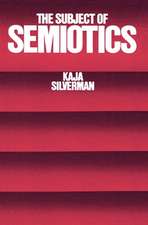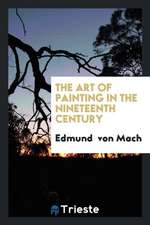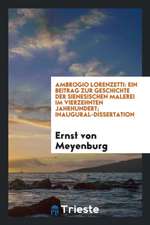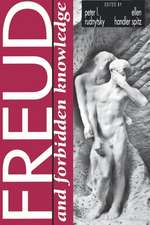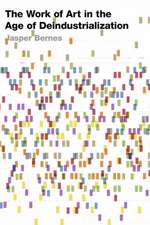The Miracle of Analogy: or The History of Photography, Part 1
Autor Kaja Silvermanen Limba Engleză Paperback – 3 mar 2015
The Miracle of Analogy is the first of a two-volume reconceptualization of photography. It argues that photography originates in what is seen, rather than in the human eye or the camera lens, and that it is the world's primary way of revealing itself to us. Neither an index, representation, nor copy, as conventional studies would have it, the photographic image is an analogy. This principle obtains at every level of its being: a photograph analogizes its referent, the negative from which it is generated, every other print that is struck from that negative, and all of its digital "offspring."
Photography is also unstoppably developmental, both at the level of the individual image and of medium. The photograph moves through time, in search of other "kin," some of which may be visual, but others of which may be literary, architectural, philosophical, or literary. Finally, photography develops with us, and in response to us. It assumes historically legible forms, but when we divest them of their saving power, as we always seem to do, it goes elsewhere.
The present volume focuses on the nineteenth century and some of its contemporary progeny. It begins with the camera obscura, which morphed into chemical photography and lives on in digital form, and ends with Walter Benjamin. Key figures discussed along the way include Nicéphore Niépce, Louis Daguerre, William Fox-Talbot, Jeff Wall, and Joan Fontcuberta.
Photography is also unstoppably developmental, both at the level of the individual image and of medium. The photograph moves through time, in search of other "kin," some of which may be visual, but others of which may be literary, architectural, philosophical, or literary. Finally, photography develops with us, and in response to us. It assumes historically legible forms, but when we divest them of their saving power, as we always seem to do, it goes elsewhere.
The present volume focuses on the nineteenth century and some of its contemporary progeny. It begins with the camera obscura, which morphed into chemical photography and lives on in digital form, and ends with Walter Benjamin. Key figures discussed along the way include Nicéphore Niépce, Louis Daguerre, William Fox-Talbot, Jeff Wall, and Joan Fontcuberta.
Preț: 194.59 lei
Nou
Puncte Express: 292
Preț estimativ în valută:
37.24€ • 38.74$ • 30.74£
37.24€ • 38.74$ • 30.74£
Carte disponibilă
Livrare economică 24 martie-07 aprilie
Livrare express 07-13 martie pentru 32.70 lei
Preluare comenzi: 021 569.72.76
Specificații
ISBN-13: 9780804793995
ISBN-10: 0804793999
Pagini: 240
Dimensiuni: 178 x 254 x 18 mm
Greutate: 0.52 kg
Editura: Stanford University Press
Colecția Stanford University Press
ISBN-10: 0804793999
Pagini: 240
Dimensiuni: 178 x 254 x 18 mm
Greutate: 0.52 kg
Editura: Stanford University Press
Colecția Stanford University Press
Recenzii
"[This book] is overflowing with excellent and challenging explorations of photography and the extensive interaction of photography with visual life. Silverman provides a superb overview of photographic making and thinking . . . Her intensive investigation of ideas and pictures through careful analysis of the writing of significant authors is remarkable and very effective in communicating her broad investigation of photography's effects on human thought and action. The writing is excellent and makes for satisfying reading . . . Highly recommended."—C. Chiarenza, Choice
"This is a lovely, intriguing book, powerfully argued, compellingly illustrated—a major provocation. Challenging all the ways we're so used to thinking about photography, its richly textured counter-history invites us to rethink the very meaning of the 'analogue' in the contemporary digital age."— Rebecca Comay, University of Toronto
"A masterly account of how photography strengthens the binds that connect us with others and the world, this book argues that each picture holds within the instant of its making an opportunity to see anew the dense and entangled relationships that ground our understanding of what it means to be here."—Paul Chan, artist
"Not simply a new counter-history, The Miracle of Analogy marks a paradigm shift after which photography will never again be thought of in the same way. Kaja Silverman's book sets the stage for future debates about the range of photography studies."—Natalia Brizuela, University of California, Berkeley
"The Miracle of Analogy is a must-read. Driven by careful study of various practitioners while masterfully juggling historical analysis with theoretical insight, Silverman unearths a missed opportunity in understanding what photography was, is, and will be."—Jacques Khalip, Brown University
"The Miracle of Analogy or the History of Photography is a methodically argued and meticulously textually-documented book. The central ideas of this carefully researched volume are important and original."—George Lzroiu, Review of Contemporary Philosophy
"The Miracle of Analogy or the History of Photography is a methodically argued and meticulously textually-documented book. The central ideas of this carefully researched volume are important and original."—George Lzroiu, Review of Contemporary Philosophy
Notă biografică
Kaja Silverman is Keith L. and Katherine Sachs Professor of Contemporary Art at the University of Pennsylvania. She is the author, most recently, of Flesh of My Flesh (SUP, 2009).
Descriere
This book is the first of a two-volume study of photography that challenges both how photography has been theorized and how it has been historicized.

